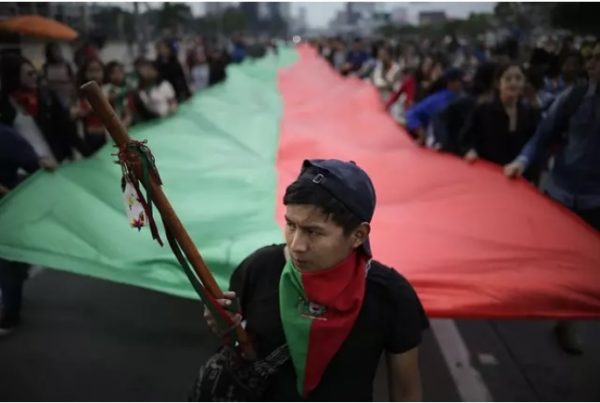10,000 Colombian indigenous marching to Bogota
They demand an end to the killings
By Sinikka Tarvainen (dpa)

HAVANA TIMES – About 10,000 indigenous Colombians were moving towards the capital, Bogota, on Wednesday to press the government to stop constant killings and massacres in the south-west of the country, local media reported.
The protesters initially walked – many of them carrying the staffs and wearing the red and green colors of the indigenous guard – or traveled on colorful buses from the south-western Cauca department to the city of Cali.
Their meeting there with Interior Minister Alicia Arango failed to produce the result they hoped for and they took off for Bogota, where they were expected to arrive by Monday.
The march known as “minga” – an indigenous word referring to a joint effort for the common good – protests the killings of civil society leaders and massacres, Rubiel Lis from the Cauca indigenous people’s organization CRIC told dpa.
About 1,000 community leaders, human rights and environmental activists have been killed in Colombia since the government signed a peace deal with the guerrilla group FARC in 2016, according to the watchdog Indepaz.
They include more than 240 indigenous people, most of them in the Cauca, according to the organization.
Indepaz has also reported over 65 massacres – defined as killings of at least three people – in Colombia so far this year, with Cauca the second-most affected region.
The indigenous protesters intended to seek a meeting with President Ivan Duque, but government representatives accused them of having political motives and said the head of state would not meet them, broadcaster Caracol reported.
The government attributes the violence to armed groups that have remained active after the 2016 peace deal ended the 52-year conflict with FARC.
The armed groups include FARC dissidents, the other guerrilla group National Liberation Army (ELN), paramilitary and criminal gangs.
In addition to opposing the violence, the “minga” was defending indigenous people’s right to autonomy in their territories, Lis said.
Protesters’ representatives said they were observing safety measures against the coronavirus, but the march nevertheless aroused concern in the capital.
The South American country’s 50-million-strong population includes about 1.9 million people identifying as members of 115 indigenous groups.




